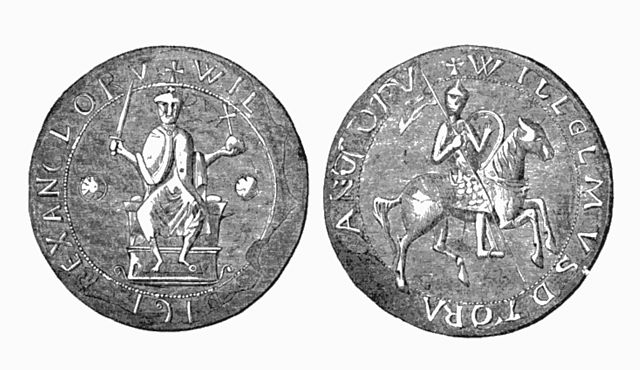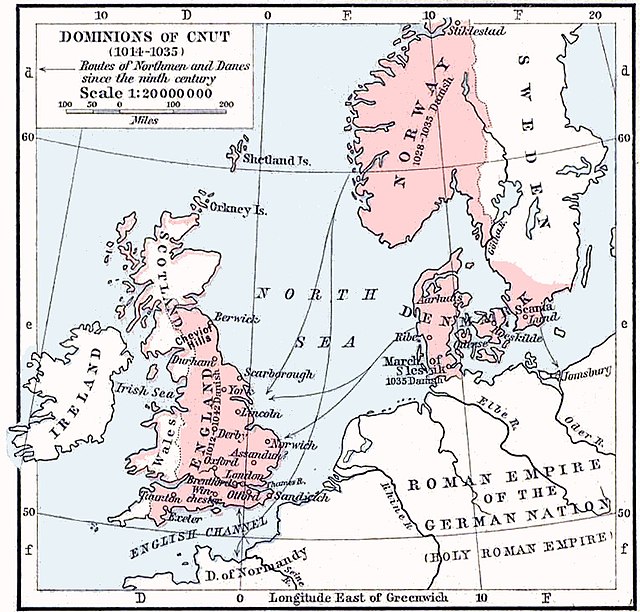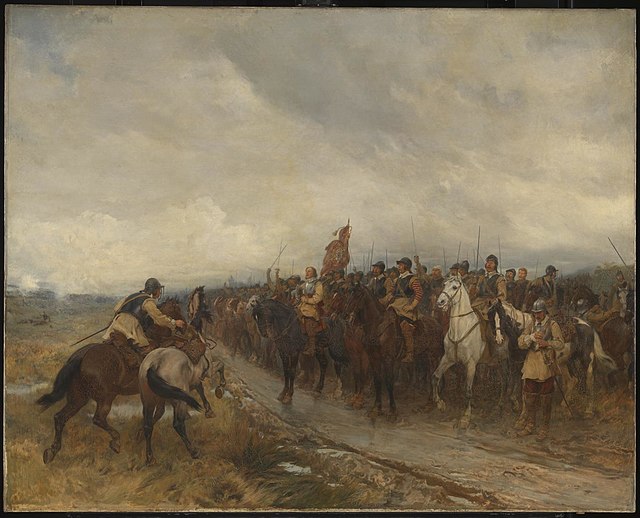England in the High Middle Ages
In the history of England, the High Middle Ages spanned the period from the Norman Conquest in 1066 to the death of King John, considered by some historians to be the last Angevin king of England, in 1216. A disputed succession and victory at the Battle of Hastings led to the conquest of England by William of Normandy in 1066. This linked the Kingdom of England with Norman possessions in the Kingdom of France and brought a new aristocracy to the country that dominated landholding, government and the church. They brought with them the French language and maintained their rule through a system of castles and the introduction of a feudal system of landholding. By the time of William's death in 1087, England formed the largest part of an Anglo-Norman empire, ruled by nobles with landholdings across England, Normandy and Wales. William's sons disputed succession to his lands, with William II emerging as ruler of England and much of Normandy. On his death in 1100 his younger brother claimed the throne as Henry I and defeated his brother Robert to reunite England and Normandy. Henry was a ruthless yet effective king, but after the death of his only male heir William Adelin, he persuaded his barons to recognise his daughter Matilda as heir. When Henry died in 1135 her cousin Stephen of Blois had himself proclaimed king, leading to a civil war known as The Anarchy. Eventually Stephen recognised Matilda's son Henry as his heir and when Stephen died in 1154, he succeeded as Henry II.

Depiction of 11th and 12th century English kings in the Chronica Majora by Matthew Paris: (from top to bottom, left to right) Henry II, Richard I, John and Henry III. Henry the Young King appears in the centre of the page.
Section of the Bayeux Tapestry showing the final stages of the battle of Hastings
The Tower of London, originally constructed by William the Conqueror to control London
Great Seal of William II
The Kingdom of England was a sovereign state on the island of Great Britain from the early 10th century, when it emerged from various Anglo-Saxon kingdoms, until 1 May 1707, when it united with Scotland to form the Kingdom of Great Britain, which would later become the United Kingdom. The Kingdom of England was among the most powerful states in Europe during the medieval and early modern colonial periods.
The dominions of Cnut (1014–1035)
Fifteenth-century miniature depicting the English victory over France at the Battle of Agincourt
Portrait of Elizabeth I made to commemorate the defeat of the Spanish Armada (1588), depicted in the background. Elizabeth's international power is symbolised by the hand resting on the globe.
Cromwell at Dunbar. Oliver Cromwell united the whole of the British Isles by force and created the Commonwealth of England.








